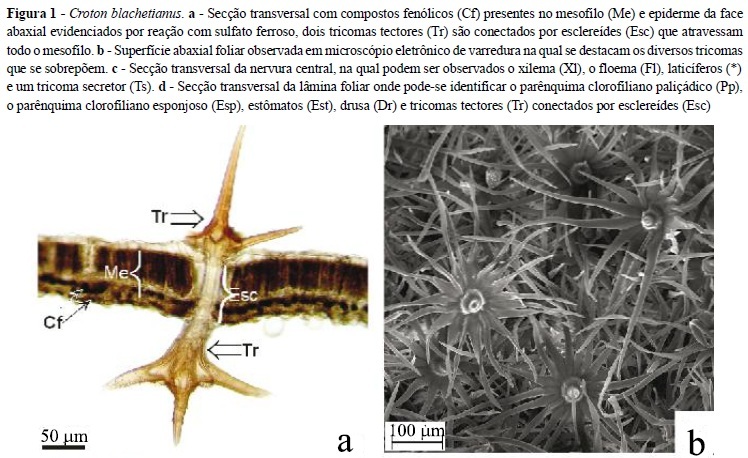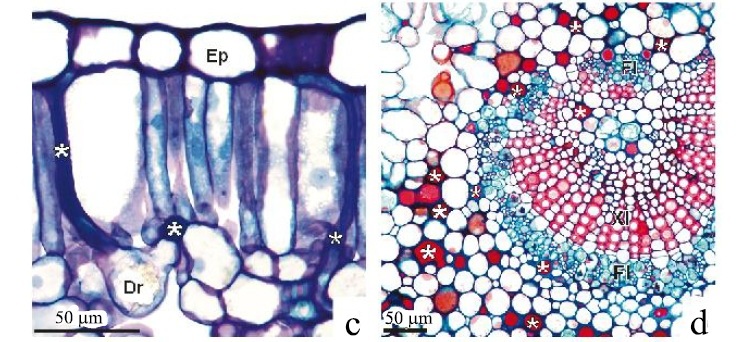Water availability is the main limiting factor for plants in arid and semi-arid environments. In these plants, a combination of characteristics contributes to water economy, among them being anatomical features. Thus, studies in leaves of the quince (Croton blanchetianus) and the velame (Croton heliotropiifolius), two common species in the caatinga and of importance in beekeeping, were performed to verify adaptive anatomical characteristics which are related to a greater efficiency in water usage. The leaves of both species have a dense indumentum, the basal-cell walls of the trichomes are impregnated with lipids, and phenolic compounds are found in the epidermal and parenchymal cells. In plants from arid environments, the trichomes can help reduce heating and leaf transpiration and also prevent the apoplastic flow of water due to the presence of lipids in the walls of the basal cells. These anatomical features may act on the water economy, and can thus be considered as adaptations to the semi-arid conditions of the caatinga.
Quince; Croton; Plants and water; Plants caatinga




